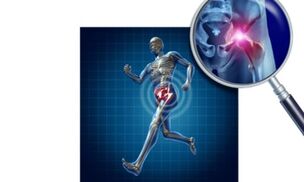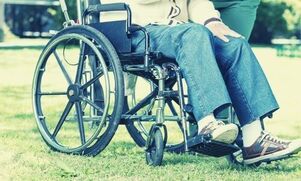Coxarthrosis (degenerative hip joint) is a degenerative-dystrophic disease of the hip joint, accompanied by damage to joint cartilage, bone tissue and surrounding structures and leads to persistent loss of joint function.

Arthritis is one of the most severe dystrophic diseases of the musculoskeletal system. The disease quickly leads to a decrease in motor activity, changing the nature of a person's movements, often - resulting in inability to move independently and disability. Several decades ago, coxarthrosis was considered one of the "diseases of old age", but since the turn of the century, a high incidence of the disease has been reported in young and middle-aged patients. , is related to many reasons.
Statistics
Osteoarthritis is the most common disease of the musculoskeletal system and occurs in 70% of adults; coxarthrosis - in 25% of patients with an orthopedic profile. Up to 30% of patients diagnosed with coxarthrosis are disabled, identified as disabled and require joint replacement surgery.
The disease occurs from 20-25 years old, the average age of onset is 37-39 years old, progressing with age, is related to the diseases of the musculoskeletal system, bone loss, . . . In middle-aged patients, the rate of fibrosis of joints is 11. %, in people over 85 years old - 35%. In children and adolescents, coxarthrosis disease is the result of congenital dysplasia of the joint, observed in 1% of infants.
Development reason
The causes of osteoarthritis have different meanings depending on the age and general health of each patient:
- congenital disorder of the normal anatomical shape of the joint - femoral neck deformity, congenital hip dislocation;
- deformation of the femur due to dystrophy (age-related) in the joint;
- traumatic injury - fractures, dislocations, non-physiology, even during sports, to load on the joint;
- infectious and inflammatory diseases - tuberculosis, osteomyelitis and others;
- rheumatoid arthritis and other systemic diseases (allergies, metabolism);
- if the exact cause of the disease is unknown and the disease has developed spontaneously, the term "spontaneous coxarthrosis disease" is used.

Symptoms of hip coxarthrosis
Pain is the main symptom. Their severity and the addition of other manifestations of coxarthrosis depend on many factors, especially body weight, lifestyle, age. In the early stages, patients notice moderate, interrupted pain in the hip joint, which mainly occurs when exertion and goes away on its own. The pain then begins with mild exercise, does not go away with rest, "shoots" in the knee joint. The mobility of the joint or both joints is limited.
The patient is forced to limit physical activity, limping, appearing "duck gait". In the terminal stage, the pain is continuously severe, the hip joint movement is strongly restricted, can only walk with a cane or crutches, the patient needs outside help around the clock, but is disabled.
Development
As the disease progresses, the hip joint gradually declines and loses its function completely.
Joint cartilage is thinner and joint space is slightly narrowed. The bone tissue under the cartilage becomes denser. At this stage, pain appears after the exercise.
In the second stage, cartilage destruction progresses. Osteogenesis cells appear - bone growth. Joint space is getting narrower. Pain occurs when walking, limited joint mobility (spasticity).
In the late stage of coxarthrosis, the bones develop broadly, the femoral tip flattens and falls, the actual joint space disappears. Persistent severe pain, the mobility of the joint is significantly limited.

Diagnosing coxarthrosis disease
If you have pain in the groin area, limited joint mobility and other symptoms listed above, you can consult a therapist, but top medical experts diagnoseDiagnosis and treatment of hip arthritis is an orthopedic trauma doctor.
The main way to diagnose coxarthrosis is an X-ray. This is an informational method that allows you to accurately evaluate structural changes in affected joints. Due to its cost effectiveness and affordability, joint radiography is still widely used. Computed tomography with X-rays is a more informative (but expensive) method. Joint magnetic resonance imaging (MRI) is also used. It is performed to detect coxarthrosis disease at the pre-x-ray stage (when there is no change on the radiograph), as well as for differential diagnosis.
Treatment of hip coxarthrosis
In the early stages of coxarthrosis, with the favorable course of the disease, conservative approaches use physiotherapy techniques, including motor therapy, massage and physiotherapy, especiallyIn particular, water and sludge therapy, a preferred complex of physiotherapy. Among proven physical therapy techniques, magnetotherapy can also be differentiated.
Magnetic therapy for coxarthrosis is used for a variety of purposes. Under the influence of magnetic fields in the body, regenerative processes are activated, including in bone tissue, and blood circulation is improved. The second point is especially important, because in osteoarthritis, the amount of blood supplied to the joint is insufficient and therefore lacks nutrients to maintain the normal state of cartilage and bone tissue, and this can be aggravatingin addition to the pathological changes in the joint. Improved blood circulation in the hip joint area helps restore the flow of essential nutrients to the joint, activates metabolic processes in bone and cartilage tissue, is the basis for the positive effect of magnetotherapyin coxarthrosis disease.
In addition, due to the enhancement of metabolism and the release of certain bioactive substances, the anti-inflammatory and analgesic effects of acupuncture therapy are observed.

Diet therapy is recommended to normalize metabolism and reduce body weight. Along with proper diet, it is possible to use auxiliary drugs (drugs and bioactive pharmaceutical additives) that affect metabolism and recovery in the musculoskeletal system - based on glucosamine and chondroitin(chondroprotectors), minerals and vitamins, standardized plant extracts.
Drugs with anesthetic and anti-inflammatory effects, namely NSAIDs, GCS, muscle relaxants and some others, are used at all stages of coxarthrosis to eliminate pain and inflammation. Their use should be carried out in the correct dosage, under the supervision and prescription of a doctor.
In the second or third stage of the disease, depending on the symptoms and condition of the patient, conservative or surgical treatment should be continued. Currently, many surgical methods are used, the best result (complete restoration of joint functions and human mobility) is full joint resurfacing - hip replacement.
Also recommended is drug therapy, diet and lifestyle therapy, physical therapy and spa treatments, both in the case of surgery and in the conservative manner. Complex physiotherapy techniques can reduce the amount of medication and the load on the body, promote faster postoperative recovery, and improve the general condition of the patient. In particular, magnetic therapy showed effectiveness and good tolerability, even in debilitated patients, the elderly and those suffering from chronic nervous and cardiovascular system diseases.

Prevention of degenerative hip joints
As a preventive measure, early detection of coxarthrosis is important. If you notice symptoms (pain, limited mobility) in the hip area, you need to consult a doctor - you can see the therapist first, then the surgeonorthopedic. The therapist can prescribe initial pain relief, recommend chondroprotectors, and the orthopedic doctor will prescribe special treatment.
The absence of excessive weight and normal physical activity, adjustment to general working and lifestyle conditions, as well as prompt treatment of diseases can become one of the causes of disease development. coxarthrosis (inflammation, infectious disease of the joint, congenital anatomical defects of the joint, degeneration of dystrophy).







































